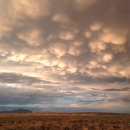States
WashingtonRestoration of Stream and Riparian Habitat Conditions in Douglas County, Washington
| Funding Year | Amount | Location |
|---|---|---|
| FY24 | $ 76,093 | Douglas County, WA |
| FY25 | $ 23,081 | Douglas County, WA |
Project Description
Mesic and riparian riparian
Definition of riparian habitat or riparian areas.
Learn more about riparian habitat along Coyote Spring and McCartney Creek on The Nature Conservancy’s Moses Coulee Preserves in Douglas County, WA is critically important to brood rearing sage grouse, sharp-tailed grouse, and other sagebrush sagebrush
The western United States’ sagebrush country encompasses over 175 million acres of public and private lands. The sagebrush landscape provides many benefits to our rural economies and communities, and it serves as crucial habitat for a diversity of wildlife, including the iconic greater sage-grouse and over 350 other species.
Learn more about sagebrush -dependent animals. Restoring these habitats through low-tech processed-based restoration techniques will work to repair heavily incised reaches to improve ecological integrity and expand seasonally available water for longer into the dry hot summer months. This project will improve water storage capacity in this watershed, expanding wetted soil area and mesic vegetation to hold more water in the system for a longer period of time into the hotter, drier summer months. This will build resilience within the system against drought and climate change climate change
Climate change includes both global warming driven by human-induced emissions of greenhouse gases and the resulting large-scale shifts in weather patterns. Though there have been previous periods of climatic change, since the mid-20th century humans have had an unprecedented impact on Earth's climate system and caused change on a global scale.
Learn more about climate change conditions predicted for this area. These areas may also be able to act as fire breaks or wildlife refugia in the event of wildfire.
Partners
Foster Creek Conservation District, National Resource Conservation Service, The Nature Conservancy and USFWS Partners for Fish and Wildlife Program



